Well, this one is pretty late coming out. I’ve been kind of swamped for several days and this really needed a 3 hour block of time for shooting and processing so I finally did it tonight.
Test Conditions
Lit by a pair of old halogens 3 feet above and 6 feet behind the subject, pointed at the ceiling and dialed up just enough to provide relief from shadows. Also a compact fluorescent bare bulb pointed at the subject from 4 feet at 45 degrees on the same plane. Amount of light gives exposures around 1/20s or 1/25s depending on the camera. So very low light.
Tripod mounted with self timer on 2s release. Zoomed to approximately 140mm. Error in zoom caused F200EXR to have about a 10% magnification advantage. Settings were Manual mode (no other modes allows long shutter speeds), M4:3, DR400, AWB, Provia.
After shooting, all images normalized in size to match the F200EXR resolution. There is no real advantage to this, despite what some like to think. In the end, you always look at prints at the same size to compare, and that is all that is happening when you normalize to matching dimensions.
All jpegs from the 3 cameras are taken straight form the camera. Not changes whatsoever. The RAW images from the F550 are processed in Silkypix, then in Camera RAW as a jpeg transfer in Adobe RGB color space.
100 ISO
Here, we see a tie across the board. There’s really no difference of any significance here. Well, one difference … the F550 has slightly higher saturation at 100 ISO. The RAW even higher than that, despite me explicitly turning it down a bit.
200 ISO
Again, not much difference as there is no stress on any of these cameras to work perfectly at this ISO. The RAW image has a slight increase in grain as I am working to maximize detail and allowing a hint of fine grain through if necessary.
400 ISO
Here, we see the first signs of stress on the sensors. There is some smearing on all the jpegs. The F200 retains slightly better saturation at 400 ISO than the F70 or F550, and seems to show better detail in the wool. It looks more like wool. But this is very subtle and would show up only at such a large print size, here, the moral equivalent of a 38” wide print viewed from 20”.
800 ISO
Inexplicably, 800 ISO looks better on all the cameras than 400 ISO did. There is some grain, but there is more detail as well. The RAW F550 image continues to lead the pack, as might be expected.
1600 ISO
Here, the main difference is sharpening. The F550 backs it off and the F200 and F70 crank it up. The latter pair have obvious edge artifacts and considerable grain, although mostly visible in the context of such a large print.
The RAW image has a much better balance of detail and noise than either the F70 or the F200. The F550 jpeg is much more pleasant to look at, although it would benefit from some sharpening if used directly. My recent experience with concert images says that 1600 ISO is pretty amazing in concert conditions, and even better in SN mode (which is not sufficiently controllable in this light to be useful for this test.)
3200 ISO
The F200 and F70 have given up the ghost. Lots of noise and desaturation have destroyed the details. At web sizes, still useful of course, but not croppable without lots of processing.
The F550 is definitely soft because of low sharpening and high noise reduction, but saturation remains high and the image is very pleasing to the eye. That’s how it should be. The RAW stomps them all since it retains more detail with less noise. But someone with better color vision would do an even better conversion. I suppose I need to invest in a color chart and start using that for white balance of the final images.
Conclusions
The F200 wins at 400 ISO. Below that, there are no relevant differences in this light. Above that, the F550 starts to assert some dominance here, although it is subtle at 800 as you would expect. After that, the F200 and F70 have noise issues and the F550 sails along nicely. This mirrors my concert experience. The F550 kicks serious butt.
Now note that the F70 looks great when shot and processed at a well lit concert. But the F550 has more resolution, better saturation, more reach and RAW. Sorry, but that’s not a contest … and don’t start with me about the F200. It’s a nice sensor in a tired body with an ancient jpeg engine and no reach. It needs a real update very badly, and with the F550 and presumably the HS20 performing amazingly well, I see little incentive for Fuji to build it bigger.
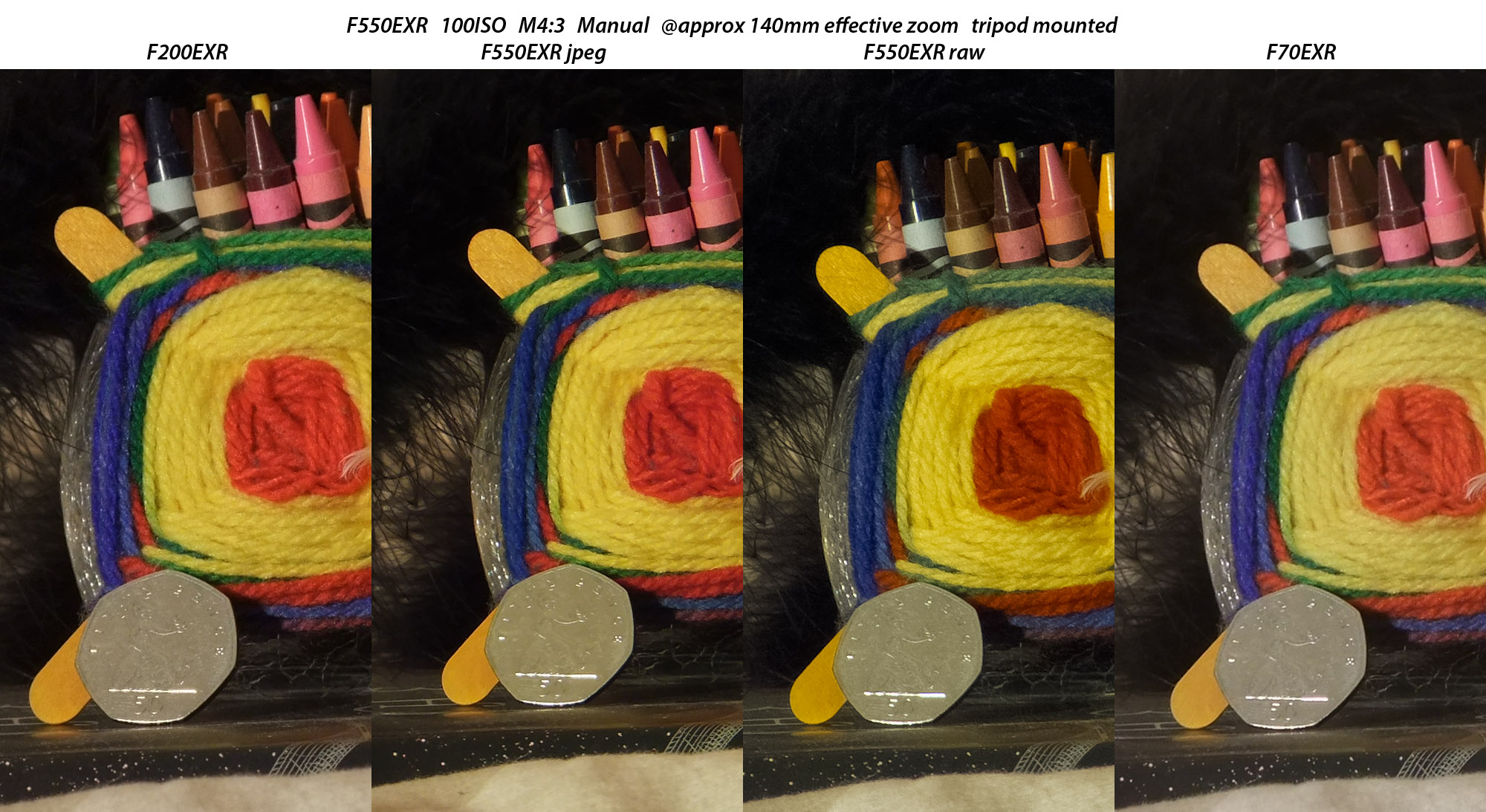
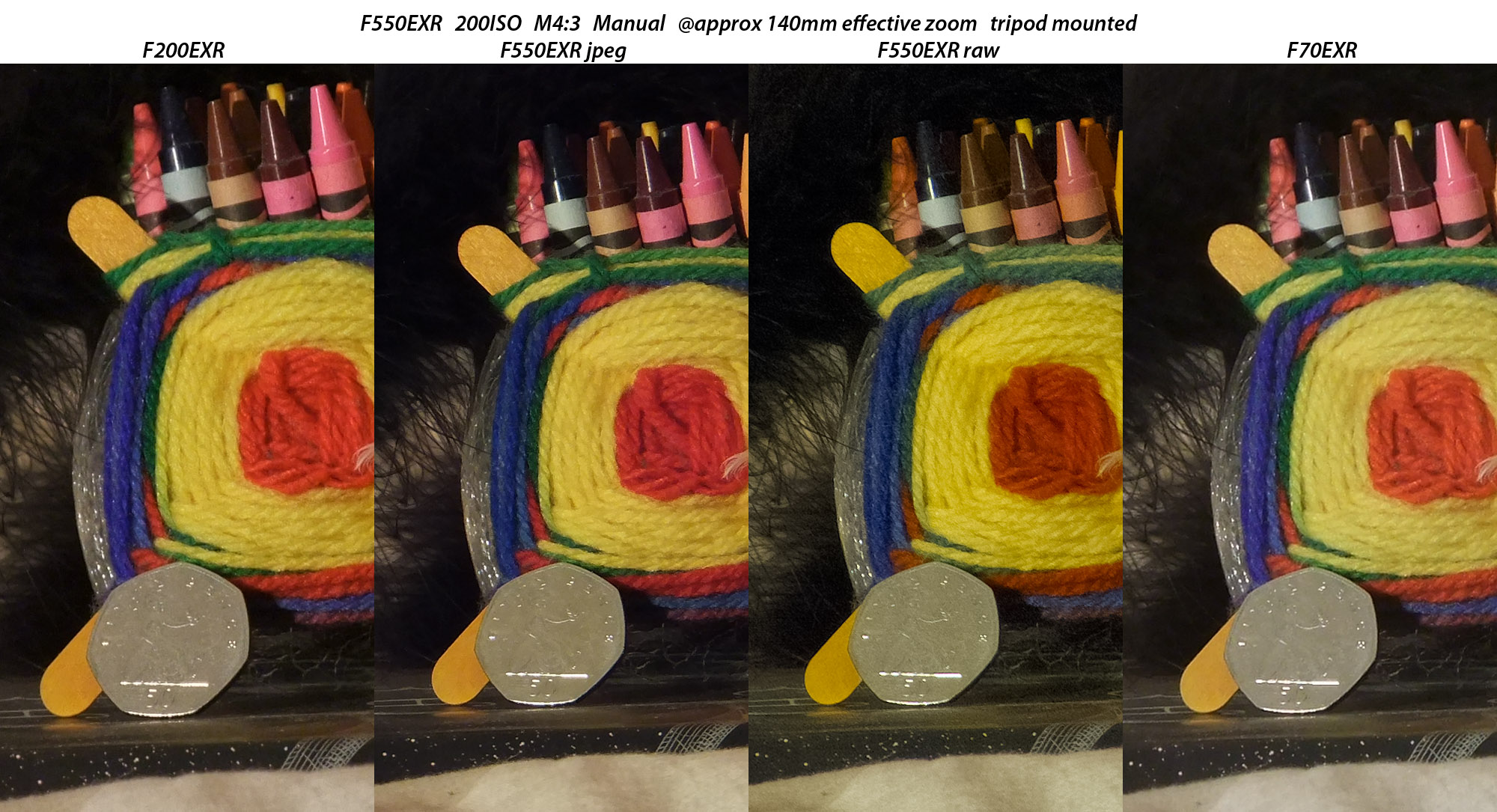
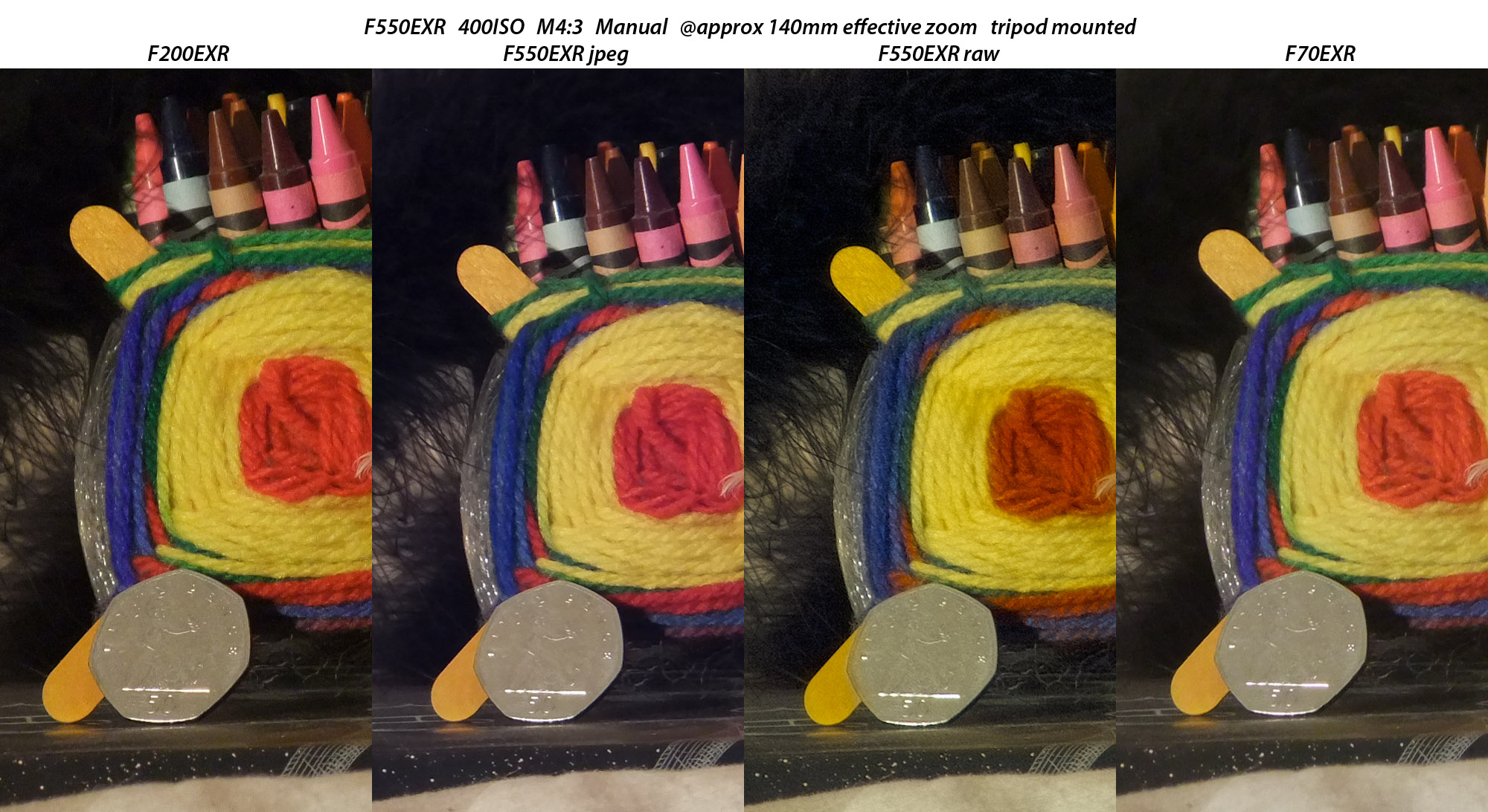
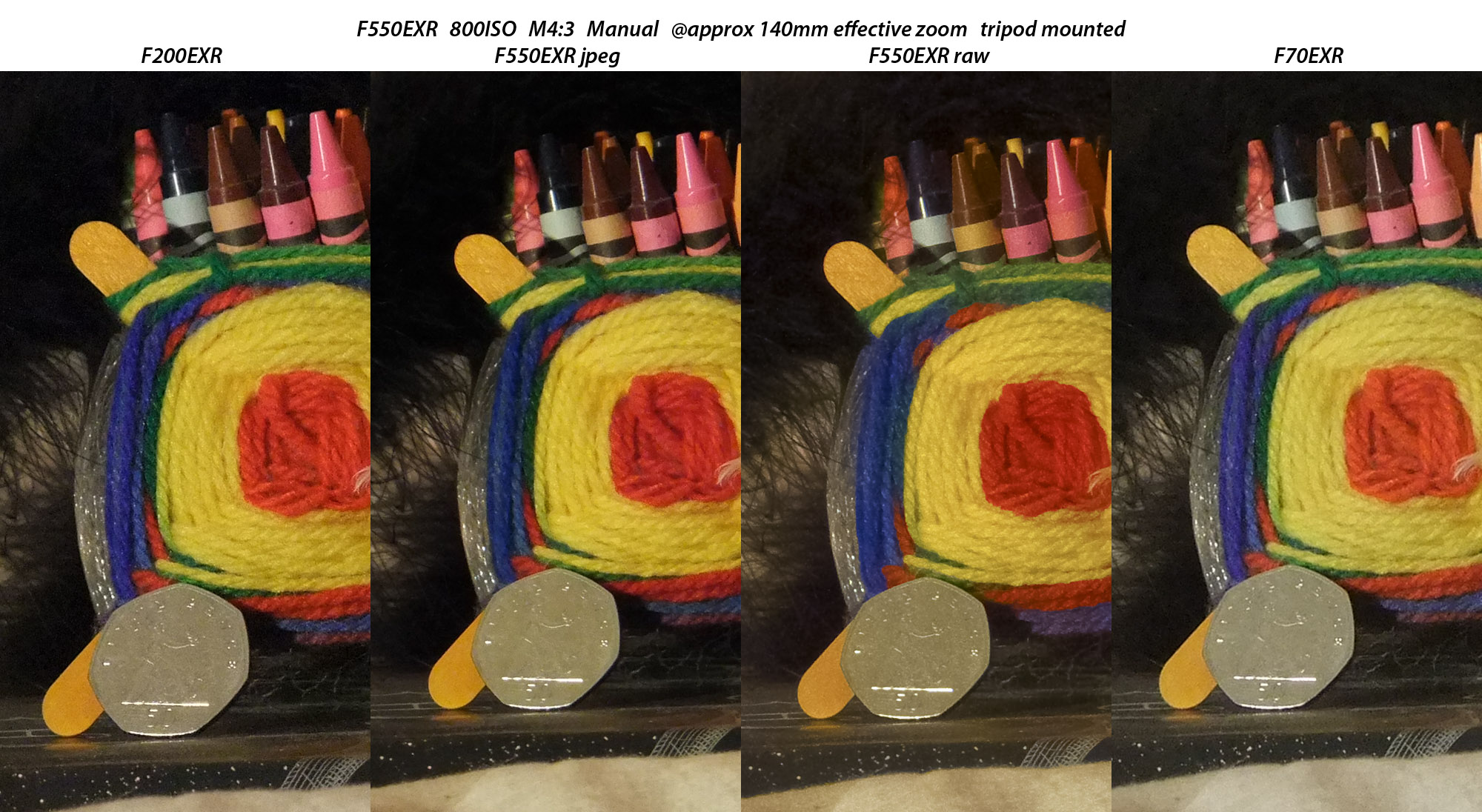
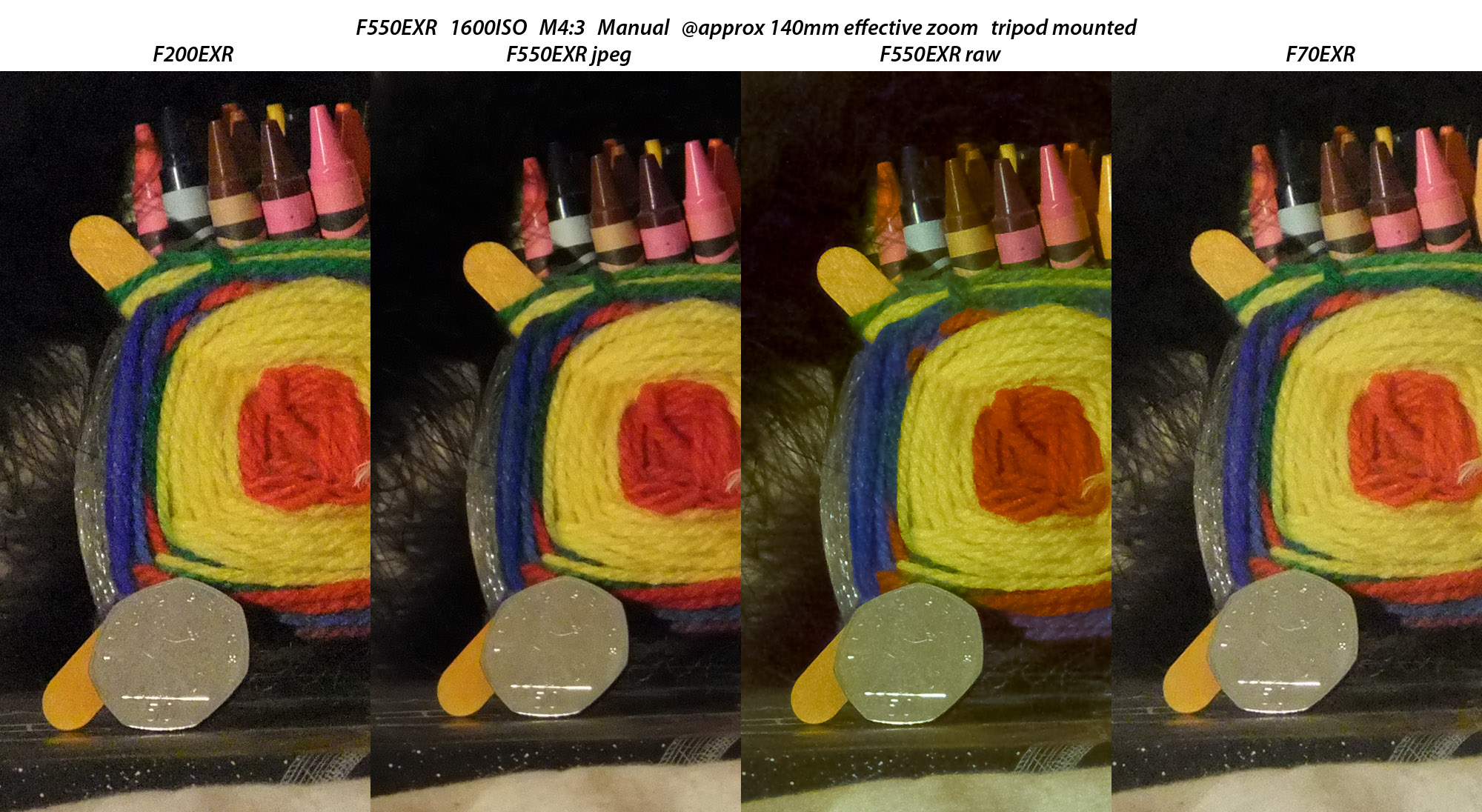

No comments:
Post a Comment